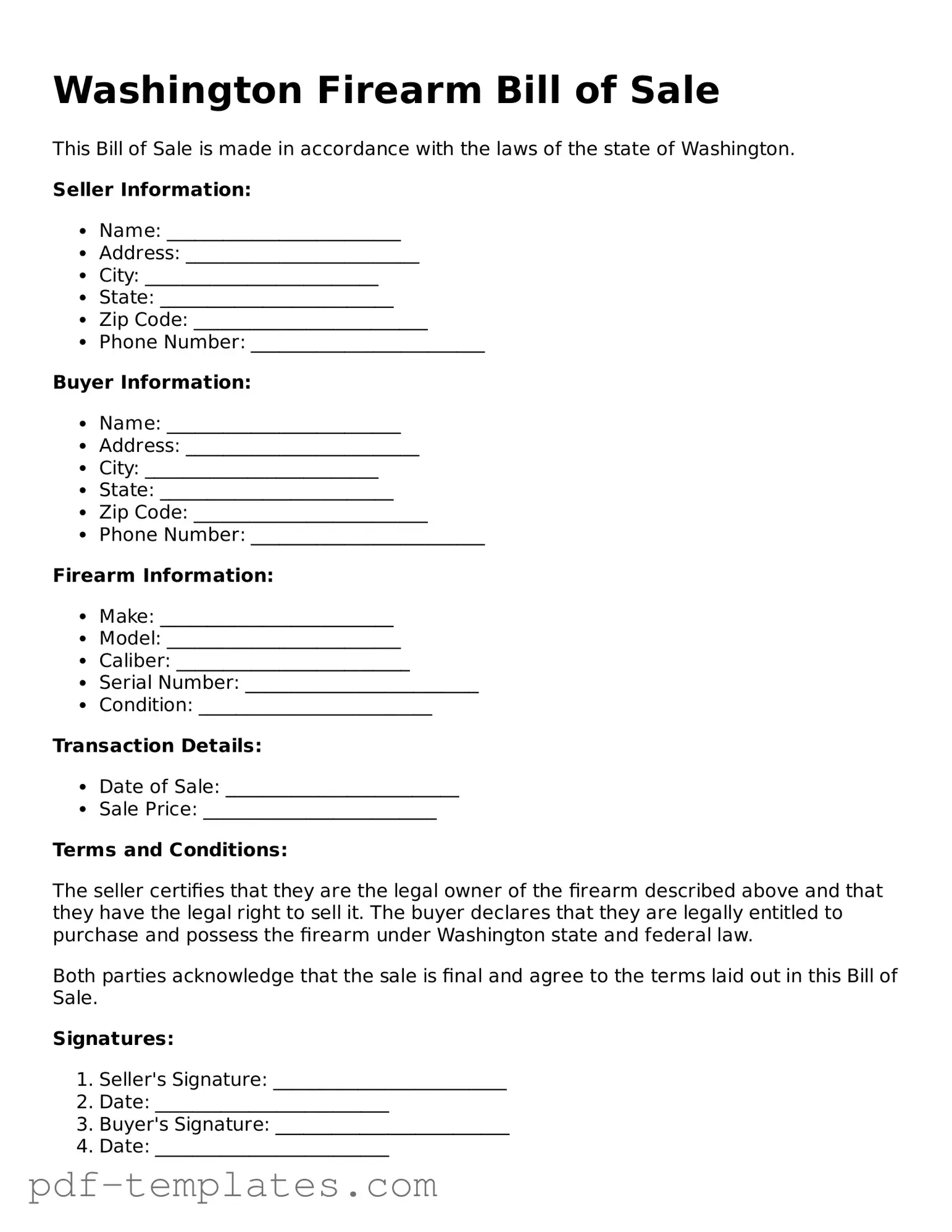The Washington Firearm Bill of Sale form shares similarities with a Vehicle Bill of Sale. Both documents serve as a record of a transaction where ownership is transferred from one party to another. Just as a Vehicle Bill of Sale includes details about the vehicle, such as its make, model, and identification number, the Firearm Bill of Sale captures essential information about the firearm, including its make, model, and serial number. Each document typically requires the signatures of both the seller and the buyer, affirming that the transaction has taken place and that both parties agree to the terms outlined in the document.
Another document that resembles the Firearm Bill of Sale is the Personal Property Bill of Sale. This form is used for the sale of various personal items, not just firearms or vehicles. Like the Firearm Bill of Sale, it includes details about the item being sold, such as its description and condition. Both documents help protect the rights of both parties by providing proof of the transaction, which can be crucial in case of disputes or misunderstandings. They also serve as a record for future reference, ensuring that both the buyer and seller have documentation of the exchange.
The Lease Agreement is another document that bears similarities to the Firearm Bill of Sale. While a Lease Agreement typically governs the rental of property, it also involves the transfer of certain rights and responsibilities between parties. Both documents require clear identification of the parties involved and detailed descriptions of the item or property in question. Just as a Firearm Bill of Sale confirms the transfer of ownership, a Lease Agreement outlines the terms under which one party can use another party's property. Each document is intended to protect the interests of both parties and provide a clear understanding of their obligations.
When it comes to legal documentation related to vehicles, understanding the nuances of different forms is crucial. For instance, the California Motor Vehicle Power of Attorney form is essential for car owners who wish to appoint someone to manage vehicle-related tasks on their behalf, which may include signing documents or handling registrations. Additionally, for those seeking various legal templates, All California Forms can serve as a valuable resource to ensure compliance and efficiency in related transactions.
Lastly, the Gift Receipt can be compared to the Firearm Bill of Sale in that both documents signify the transfer of ownership. A Gift Receipt is used when one person gives an item to another without any exchange of money. Similar to the Firearm Bill of Sale, it details the item being transferred and often includes the names of both the giver and the recipient. While a Firearm Bill of Sale indicates a sale, a Gift Receipt demonstrates a voluntary transfer without compensation. Both documents provide evidence of the transaction, which can be important for record-keeping or in the event of future disputes.
